
- •Lesson I. Climate and weather
- •I. Insert the appropriate words.
- •II. Make up words combinations from left and right columns.
- •III. Transform the following sentences using the models:
- •IV. Read the following sentences inserting the appropriate words.
- •V. Answer the questions:
- •VI. Read and translate the text. Climate differences around the world
- •Climate Characteristics
- •VII. Choose the right variant.
- •VIII. Read and translate the poem. Try to make the rhyme. Wind and weather
- •IX. Translate into Russian.
- •X. Translate into English.
- •XI. Fill in the blanks with as … as, so … as or than.
- •XII. Open the brackets, using the verbs Present, Past or Future Indefinite Passive.
- •XIII. Read, translate and answer the questions.
- •XIV. Ask questions beginning with Which is…? and answer them.
- •XV. Choose the right word:
- •XVI. Read these word aloud.
- •Lesson II. Exploring the world
- •I. Read and translate the text. Which is the Biggest Animal 1in the World?
- •The smallest animals in the world.
- •World's Smallest Snake: 10.1 cm (4-inch) long.
- •World’s Smallest Fish: 7.9 mm (0.3-inch) long.
- •World’s Smallest Horse: 43.18 cm (17-inch) tall.
- •II. Read and translate the text about natural wonders of the world. Seven natural wonders1 of the world.
- •III. Answer the questions:
- •IV. Choose the correct statement.
- •V. Finish the sentences choosing the correct answer.
- •VI. Finish the following sentences as shown in the example.
- •VII. Find the words.
- •VIII. What disaster is described in each of these sentences?
- •IX. Write an essay (100-150 words) about our planet «I love my world».
- •X. Insert the adjectives and adverbs given in brackets.
- •XI. Fill in the gaps by the verbs in present continuous using the pictures.
- •XII. Open the brackets using:
- •XIII. Translate the following sentences into English.
- •XIV. Translate into English.
- •XV. Put the adjectives in the appropriate form.
- •XVII. Put the verbs in brackets in present simple or present continuous.
- •XVIII. Read these words aloud.
- •Lesson III. Holiday-making
- •I. Read the story below and decide on the correct order of the paragraphs (a – d).
- •II. Read and translate the dialogue.
- •III. Read the advertisements of a travel agency, discuss them in groups and fill in the table. Arctic Adventure.
- •Water Experience.
- •IV. Complete this short text with a suitable word or phrase in each gap.
- •V. Read the following letter. The only adjective Sue and Bill used is nice. Use a better adjective from the box below instead of nice.
- •VI. Fill the gaps with a suitable word. (One word only for each gap.)
- •VII. Make your own advertisement of holidays at the seaside looking at the picture.
- •VIII. Insert the article where necessary.
- •IX. Translate from Russian into English using your active vocabulary.
- •X. Put the verbs the brackets on the necessary tense.
- •XI. Supply the correct prepositions where necessary.
- •XIII. Read the following, paying particular attention to the pronunciation of the letters and combinations of letters in bold type.
- •XIV. Discuss in pairs. Student a- profile 1 see page 73, student b- profile 2 see page 75.
- •XV. Write the story using the following words and word combinations:
- •Lesson IV. Celebrations
- •I. Read the information about the most popular public holidays in the United Kingdom and find the corresponding Russian holidays.
- •II. Read and translate the text.
- •III. Insert the words.
- •IV. Translate into English.
- •V. Insert the proper article:
- •VI. Read the information on the types of parties taking place in Great Britain and say if we have similar parties in Russia.
- •VII. Open the brackets using the right form of the verb in the Passive Voice:
- •VIII. Extend the statements following the example given in the pattern:
- •IX. Finish these sentences, using reflexive pronouns:
- •X. Choose and use the other, another, others, the others in the following situations:
- •XI. Translate into English.
- •XII. Write the marked words without negative suffixes. Translate the following sentences.
- •Lesson V. Hobbies. Leisure
- •I. Fulfill the table below.
- •II. КонецформыначалоформыUnderline the word that doesn’t belong in the list:
- •III. Read the text about the hobbies of well-known and famous people.
- •IV. Post-reading discussion.
- •V. Do you really enjoy being a couch potato?
- •VI. Read the text about active kinds of hobbies and answer the following questions:
- •XI. Make up sentences using Present Perfect and put all possible questions:
- •XII. Translate the following sentences into English.
- •XIII. Analyze the use of the Perfect Forms. Translate the sentences into Russian.
- •XIV. Change the following sentences into interrogative and negative:
- •XV. Open the brackets using Past Perfect or Future Perfect.
- •XVI. Translate into English:
- •Lesson VI. Sport
- •Questionnaire.
- •I. Agree or disagree with the statements.
- •II. Guess what sports and games are described here:
- •III. Choose the right names of British popular sports and games to complete the sentences.
- •IV. Translate the italicized adjectives:
- •V. Read the texts about the extreme kinds of sport and translate them.
- •1. Going to Extremes?
- •3. Fill in the correct tense.
- •VI. Discussion.
- •VII. Fill in the suitable modal verbs or their equivalents. Translate the sentences:
- •VIII. Translate into English using active vocabulary.
- •IX. Choose the right variant.
- •X. Translate into English.
- •XI. Translate into English using the same structure as in the models.
- •XI. Translate into English, using the following words.
- •XII. Pronounce correctly.
- •XIII. In pairs role play the following situations:
- •Lesson VII. Music
- •I. Divide the following instruments into the four groups:
- •II. Complete with the words below.
- •III. Answer each of the questions.
- •IV. Learn the types of music.
- •V. Describe your favorite song according the following plan:
- •VI . Read the text, then say what title you would suggest for it.
- •VII. Post-reading discussion.
- •VIII. Translate the sentences.
- •IX. Translate into English:
- •X. Insert somewhere, anywhere, nowhere или everywhere.
- •XI. Translate into English.
- •XII. Translate into English choosing the appropriate preposition with the verb to be (page 88).
- •XIII. Translate into Russian ( page 88).
- •XIV. Pronounce correctly.
- •XV. Discuss in pairs. Are you for or against classical music? Study the following arguments and develop the ideas.
- •XVI. Discuss in pairs. Student a- profile 1 see page 73, student b- profile 2 see page 75. Lesson VIII. Family relations
- •Ages and stages
- •I. Read and discuss.
- •II. What is your opinion:
- •III. Fill in the correct family member: niece, nephew, grandson, aunt, uncle, grandfather, father-in-law, mother-in-law, cousin
- •IV. Discussion
- •V. Read and discuss the text with your partner.
- •What does it mean?
- •VI. Read and smile.
- •VII. Translate into English:
- •VIII. Insert the missing prepositions and adverbs where necessary.
- •IX. Read the text and describe the relationships between the characters of the story.
- •X. Rewrite these sentences in the passive.
- •XI. Translate into English using Passive Voice.
- •XII. Look at the pictures and the prompts and make sentences using the present simple passive, as in the example.
- •1. Volkswagen cars are made in Germany.
- •XIII. Match Column a with Column b to make correct sentences using the past simple passive. Then, in pairs, ask and answer questions, as in the example.
- •XIV. Use the correct form of the verbs to complete the sentences below:
- •XV. Use Present or Past Indefinite.
- •Lesson IX. Shopping for clothes
- •I. Read and translate the text.
- •II. Find logical order for these sentences.
- •III. Read the lines of conversation in a clothes shop. Who says them, the customer or the shop assistant? Write c (customer) or sa (shop assistant).
- •IV. Match the word with its definition.
- •V. Do you know these words?
- •VI. Read the text and answer the questions.
- •VII. Read and smile.
- •VIII. Read and translate the dialogue.
- •IX. Ask your friend:
- •X. Discussion.
- •XI. Complete the text with a / an, the or no article.
- •XII. Translate into English.
- •XIII. Fill in the gaps and complete the sentences. Use either... Or, neither... Nor, both... And.
- •XIV. Choose the right variant.
- •XV. Insert both, all, neither or none.
- •XVI. Complete the sentences with the correct form of the verb.
- •XVII. Complete the following using so/too, neither/either. Give both possible forms.
- •XVIII. Translate into English using neither…nor, either….Or, both…and.
- •X. Translate into Russian:
- •XI. Choose the right variant.
- •XII. Translate into English:
- •XIII. Open the brackets:
- •XIV. Translate into English, using the Gerund.
- •XXII. Pronounce correctly.
- •XXIII. Which of these items is the most important, the second most important, the least important for you when you buy clothing? Why? Write a short paragraph explaining the reasons for your choice.
- •XXIV. Discuss in pairs. Student a- profile 1 see page 74, student b- profile 2 see page 76.
- •I. Match the comments with the cartoons below.
- •II. How far do you think everything has a fair price? Decide how you would react in the following situations. Work in pairs to compare your answers.
- •III. Read the dialogues with famous people and say what your opinion about the discussed questions.
- •IV. You can see advantages and disadvantages of having a lot of money. Discuss them in pairs and decide if great money is evil or happiness?
- •V. Read and translate the text.
- •VI. Answer the questions.
- •VII. Read the article and match the underlined words and expressions 1-6 to definitions a-f below.
- •VIII. Match the multi-word verbs in italics to their meanings a-e.
- •IX. Some key banking words are built around the verb draw. Study the words in context in sentences 1-3, then choose the correct alternative in sentences a-c below.
- •VIII. Translate into English.
- •IX. Choose the right variant.
- •X. Translate into English using the same structure as in the models.
- •XV. Pronounce correctly.
- •XVI. Read the following words, paying particular attention to the pronunciation.
- •XVII. Role play.
- •Antarctica
- •Antarctica
- •Грамматический справочник. Lesson I.
- •Impersonal sentences. Безличные предложения.
- •Degrees of comparison of adjectives and adverbs. Степени сравнения прилагательных и наречий.
- •Сравнение предметов.
- •Lesson II. Continuous Tense. Продолженное время
- •Спряжение времен группы Continuous Active Voice
- •Значение времен Continuous и их перевод.
- •Continuous Tense Passive.
- •Lesson III. Prepositions. Предлоги.
- •Lesson IV. Reflexive and Emphatic Pronouns. Возвратные и усилительные местоимения.
- •Lesson V. Present Perfect Tense. Настоящее совершенное время.
- •Past Perfect Tense and Future Perfect Tense. Прошедшее и будущее совершенное время.
- •The Perfect Tense (passive voice). Настоящее совершенное время (пассивный залог).
- •Lesson VI. Participle. Причастие.
- •Субъектный причастный оборот.
- •Независимый причастный оборот.
- •Употребление глагола to be с предлогами.
- •Lesson VIII.
- •Indefinite Tenses (revision). Неопределенное время (повторение).
- •The Passive Voice. Страдательный залог.
- •Lesson IX. Слова both, neither, none.
- •Lesson X. Gerund. Герундий.
- •Irregular verbs. Неправильные глаголы английского языка.
- •Vocabulary Lesson I. Climate and weather
- •Lesson II. Exploring the world
- •Lesson III. Making holidays
- •On the beach
- •In the camp
- •Lesson IV. Celebrations
- •Lesson V. Hobbies. Leisure
- •Lesson VI. Sport
- •Lesson VII. Music
- •Lesson VIII. Family relations
- •Lesson IX. Shopping for clothes
- •Lesson X. Money
- •Список использованной литературы
XVI. Read these word aloud.
comedy, origin, regular, federal, mineral, energy, tactful, reflect, engineer, reconstruct, pioneer, demonstration, literature, temperature, furniture, signature, find, bold, mold, behind, kind, fold, mind, blind, narrow, carry, merry, mirror, current; to extract, an increase.
Lesson II. Exploring the world
Starter activity
1. What does the sun give to our planet?
2. Why does night change to day on the earth?
3. Can you see and feel that our earth is turning all the time?
4. Is the moon a planet?
5. Is the earth a planet or a star? 1
I. Read and translate the text. Which is the Biggest Animal 1in the World?
You think it is an elephant. Yes, the elephant is a very big animal, but it is not the biggest in the world. The biggest of all is the blue whale .The blue whale is about thirty meters long and it weighs about one hundred and thirty tons. That is as much as thirty six elephants. The whale has a body like a torpedo, it is very good for swimming in the sea. But the whale is not a fish, it is a mammal. It breathes the air as we do.
The smallest animals in the world.
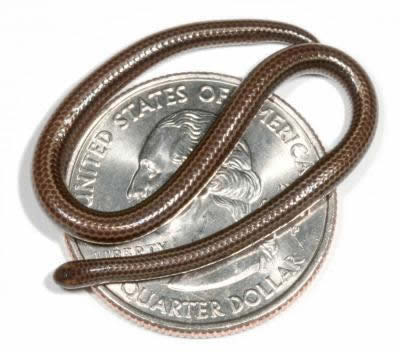
World's Smallest Snake: 10.1 cm (4-inch) long.
Leptotyphlops carlae is the world's smallest species of snake, four inches in length. It was found on the Caribbean island of Barbados, it is as thin as a spaghetti noodle and small enough to rest comfortably on a U.S. quarter - was discovered by Blair Hedges.
World’s Smallest Fish: 7.9 mm (0.3-inch) long.
On January 2006, the world's smallest fish was discovered on the Indonesian island of Sumatra: a member of the carp family of fish, the Paedocypris progenetica. It is the world's smallest backboned animal; only 7.9 mm long.
World’s Smallest Horse: 43.18 cm (17-inch) tall.
The little horse was born to Paul and Kay Goessling, who specialize in breeding miniature horses. The five-year-old Thumbelina is the world’s smallest horse: 60 lb and 17-inch tall.
Do you know any other small animals?
II. Read and translate the text about natural wonders of the world. Seven natural wonders1 of the world.
There are many magnificent2 places on the Earth with origins that sometimes can't be explained. The more we look around us, the more wonders we see in the world3. Here is the list of the seven natural wonders of the world:
Grand Canyon (Northwest Arizona, the USA).
Great Barrier Reef (the Coral Sea, off the coast4 of Queen island in Australia).
Valley5 of Geysers6 (Kamchatka Peninsula, Russia).
Mount Everest (on the border of Tibet and Nepal, in the central Himalayas).
Aurora (in both hemispheres7 of the Earth, in its upper atmosphere).
Paricutin volcano (Paricutin village, Mexico).
Victoria Falls8 (on the border between Zambia and Zimbabwe).
Mount Everest.
Mount Everest is a part of the Himalayas.
It is the
tallest mountain in the world - 29,028 ft. It is found in Nepal
and stands on the border9
of Tibet. Many people tried to
climb10
Mount Everest. The very first successf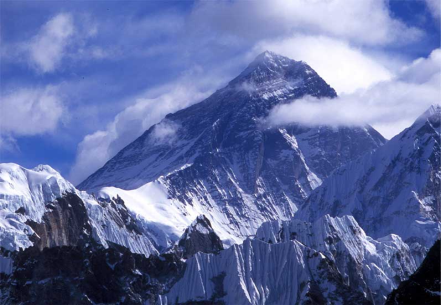 ul
expedition to reach the summit11
was in 1953. Mount Everest was named after Sir George Everest, a
surveyor12
from England.
ul
expedition to reach the summit11
was in 1953. Mount Everest was named after Sir George Everest, a
surveyor12
from England.
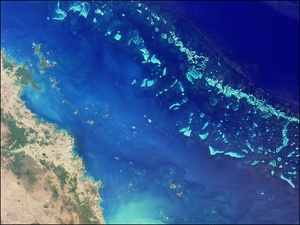 Great
Barrier Reef.
Great
Barrier Reef.
The Great Barrier Reef is a natural sculpture. This unique13 coral reef is the largest coral reef system in the world, with over 3000 individual coral reefs and 900 islands located14 within the Great Barrier Reef. People from all over the world come here to explore15 the coral reef, and see a lot of different biological species16 and types of vegetation17.
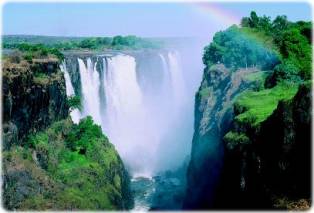 Victoria
Falls.
Victoria
Falls.
The Victoria Falls is located on the Zimbabwe River in South Africa. It is 1708 meters wide18 and drops19 90 to 107 meters down. The Falls are spectacular20 throughout the year, but after the rain season, has the heaviest flow. The first person to tell the world about this natural wonder was David Livingstone, in 1860. You can find hippos21 and crocodiles in these waters.
Aurora borealis.22
Northern23 Lights is scientifically24 called Aurora borealis. The Northern lights appear in the night sky in the Northern Hemisphere, sometimes all the way to Mexico. We see these lights when a stream25 of protons and electrons, which erupts26 from the sun’s surface27 in the form of solar wind. The green, pink blue or violet colors can be seen.
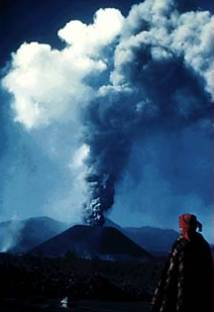
Paricutin Volcano.
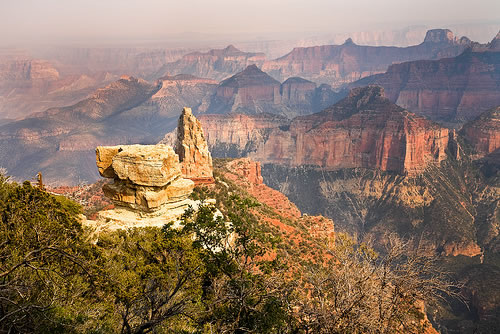 The
Paricutin Volcano is located in Mexico, about 200 miles west of
Mexico City. It stands to 1345 feet above ground and 9210 feet above
sea level. The eruption that created Paricutin began in 1943 and
continued to 1952. The Paricutin is part of the Volcanic Axis28,
a 700-mile line of volcanoes that extends across southern29
Mexico.
The
Paricutin Volcano is located in Mexico, about 200 miles west of
Mexico City. It stands to 1345 feet above ground and 9210 feet above
sea level. The eruption that created Paricutin began in 1943 and
continued to 1952. The Paricutin is part of the Volcanic Axis28,
a 700-mile line of volcanoes that extends across southern29
Mexico.
Grand Canyon.
The Grand Canyon is located mainly in Arizona. It runs over 277 miles in length30 and can be from 4 to 18 miles wide depending on the area you are visiting.
Most of the Grand Canyon can be seen from points within Grand Canyon National Park, one of the first national parks in the country. The canyon is one of the most popular natural tourist sites on the planet.
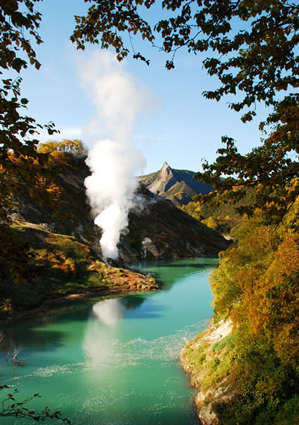 Valley
of Geysers.
Valley
of Geysers.
The Valley of Geysers in Kamchatka, Russian Far East31, is one of the largest geyser fields in the world, and the only one in Eurasia. It is located in the Kronotskiy State Natural Biosphere Reserve that is a part of UNESCO World Heritage Site "Volcanoes of Kamchatka".
The Valley of Geysers was discovered in 1941 by Kronotsky reserve32 geologists Tatyana Ustinova and Anisifor Krupenin. Since then it became tourist site of Kamchatka. In 2008 the Valley of Geysers was elected33 as one of seven Wonders of Russia.

1. a wonder - чудо
2. magnificent - великолепный, изумительный
3. a world - мир
4. a coast - берег
5. a valley - долина
6. a geyser - гейзер
7. hemisphere - полушарие
8. falls - водопад
9. a border - граница
10. to climb - подниматься, взбираться
11.a summit - вершина
12. a surveyor - исследователь
13.unique - уникальный, необычный
14. located - расположенный
15. to explore - исследовать, изучать
16. species - виды
17. vegetation - растительность
18. wide – широкий
19. a drop - высота падения
20. spectacular – захватывающий
21. a hippo - гиппопотам
22. Aurora borealis - Северное полярное сияние
23. northern - северный
24. scientific - научный
25. a stream - поток
26. to erupt - извергать
27. a surface - поверхность
28. an axis - ось
29.southern - южный
30. a length - длина
31. Far East - Дальний Восток
32. a reserve - заповедник
33. to elect - выбирать
